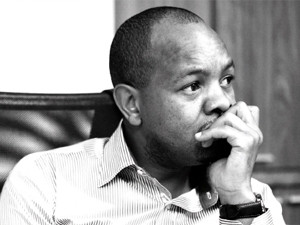
Something unusual happened while putting together this roundtable. Normally, the only interest I get to participate in this forum is from vendors and local ICT firms, hopeful of getting media exposure for their companies and products.
This time, however, I heard from an end-user (who, at his request, shall remain nameless). Although I briefly entertained the idea of having him ask his questions of the assembled industry pundits directly, sanity prevailed and I opted instead to ask two of his five questions on his behalf.
The reason for choosing only two questions is time: in an hour-long discussion involving 12 participants, there's rarely enough time to handle more than three questions in total. Furthermore, the resulting reportage tends to be considerably more brief than was the case at the actual event, which is a function of the limited space I have in which to publish the report.
The first query from the intrepid end-user is particularly interesting for ICT industry grey-beards, and concerns time-slicing, as used to happen in the mainframe era. He wants to know if the cost of computing power in the cloud changes depending on the time of day it is used.
Jan Dry, CTO and head of cloud services at Datacentrix, says it's not a common practice locally, but that, internationally, there are lower pricing levels for off-peak periods. As local cloud services and the capability to manage the way they're costed and priced mature, the practice should arrive in South Africa, he adds.
"We're not there yet and the local market is definitely not at that level of maturity, but we do have the potential and the base systems are in place to be able to do that," says Dry.
Bad experiences
The unnamed end-user's second question has its genesis in a couple of bad experiences he shared with ITWeb, involving his difficulty in on-selling cloud-based services to his own customer base. He asks: why are local cloud providers so unnecessarily protective of their pricing calculator?
Charles Lalieu, analyst: cloud infrastructure services at Business Connexion, suggests the end-user find a cloud computing brokerage where, presumably, the pricing of the cloud services is more transparent.
Patrick Shields, CTO at Software AG, is a little more helpful when he recommends trying to ensure either a flat or predictable rate. He elaborates: "The important thing is the value I'm getting for what I'm spending, and can I predict what my cost is going to be so I can actually mark up and pass that on to my customers."
There is such a wide range of definitions that it's very difficult to compare like with like.
Mark Walker, IDC Middle East, Africa & Turkey
MWEB Business head of products, Hennie van Tonder, wonders if the curious end-user is unable to match the model he has been presented with to his customers' needs. "I think it's a valid concern," he adds. "We need to be able to communicate in such a way with our resellers and customers that we can address their needs and that they understand what we're actually selling and what the [precise] value is of what we're selling."
Mark Walker, director: insights and vertical industries for IDC Middle East, Africa & Turkey, believes this query highlights the lack of standardisation in definition of what constitutes a service. "There is such a wide range of definitions that it's very difficult to compare like with like," he says.
All about margin
Shields makes the point that the question is really about margin. As we come across customers that want to entertain cloud, the savvy client is going to want to know how we arrived at that price, he comments.

He adds that the type of service offered by cloud affects both the price and the pricing model. For example, in the cloud, a company could be procuring IaaS (infrastructure as a service), PaaS (platform as a service) or SaaS (software as a service). He says the first two are relatively easy to cost, being mostly based on established hosting models.
"But it gets a little trickier with SaaS. How do you calculate the cost of R&D or of software development time?" Shields notes, too, that developing and rolling out bug fixes adds further complexity and cost.
Gareth James, cloud advisor in the office of the CTO at CA Southern Africa, says this is something the company has been looking at recently. Another lesson to be learned, he says, is that enterprise-class cloud providers will have different services and pricing models to those serving the SME market.
"And, unfortunately, we don't have standards in the industry," he adds.
The whole conversation has shifted from cloud computing to cloud services.
Gareth James, CA Southern Africa
Business Connexion's Lalieu agrees and makes the point that cloud services is not a shrink-wrapped product. "You make yourself competitive by dropping out certain functionality of the product - and selling specific resources to create a stickiness to get the up-sell in or cross-sell what you're going to get from [add-ons]," he says.
He also points out that the metering, the resources that are used and the costing on those resources is still a relatively new concept in South Africa and worldwide. "This is the challenge people are facing in terms of calculating the costing and building pricing models around it," says Lalieu.
Searching for clarity
Graham Vorster, head of emerging technologies & alliances at T-Systems, suggests the problem isn't necessarily the costing model, but the definition of the services being priced. He says at an infrastructure level, services are commoditising very quickly, but this is not true of more complex services.

"Customers want to understand what exactly you're delivering and how you're getting to those costs. So I think the problem lies within the definition."
Anver Vanker, consulting systems engineer at Cisco, says the problem is historical in that different types of services were priced in the beginning and were then used as building blocks for pricing later services. "But users are looking for functionality they don't really care about [the how]... and they just want to know if it has security," he says.
Shields contends the cost calculator is a cloud provider's intellectual property, and illustrates it with a useful hypothetical example: two cloud providers sourcing from the same wholesaler can only differentiate themselves by tweaking the algorithms contained therein. "If I can put the pieces together in a more clever way, it gives me the ability to charge less for it, which is better for me," he adds.
Steve Cohen, MD of Sage Pastel, believes too much emphasis is being placed on cost, without due consideration of the benefits. "You weigh up what benefit this is going to have to your business. How much is it going to reduce complexity? And that much-hated [phrase] 'total cost of ownership', and you compare it to what you're paying," he says.
"People have to be business-savvy. They have to work out if it's going to help them. Is it going to make sense? The price is right; it's new. Our kids won't be asking this question, it's just a time of transition."
Transformation ahoy
CA Southern Africa's James believes there's a shift under way that will dramatically transform how we view the cloud in the future. "The whole conversation has shifted from cloud computing to cloud services. That's a significant and fundamental shift. It shows that we're moving further up the stack," he says.
The significance of this is that the actual computing function is slipping into the background and customers are beginning to focus on the service provided.
Walker believes the companies that will win will be the ones with deep industry knowledge, and he coins a term to describe what he's talking about: verticalisation. "From the supply side, the success factor is going to be to really understand the business; otherwise you're just going to become another box-dropper," he adds.
Van Tonder gets back to the whole IaaS versus SaaS discussion and posits the theory that, from a product lifestyle point of view, the former is more mature than the latter. Growth in IaaS has been significant, he says, because it's not a long jump to there from traditional hosting services.
SaaS, on the other hand, is currently only in the early adopters phase if one looks at the typical product life cycle.
Lalieu also urges a move away from talking about the technology and a move towards looking at the services that the market is going to demand and need. "Of course connectivity and data sovereignty are issues, but businesses, in terms of growing the economy, have to find better ways of getting out there and doing business," he says.
Go big or go home
Nader Henein, regional director for BlackBerry, is convinced that cloud providers offering services in SA must compete internationally or they will doom themselves to a relatively insignificant existence. "Unless they do so, they are just going to be a stepping stone for customers to use to move to cloud, and then they're going to move to an international provider because they'll see better scale and better pricing," he says.

"So if you're in the cloud game, your services need to be internationally competitive, not just locally competitive. If you hang your hat on [insistence to host-in country], it's going to be a very niche market and there are only so many people who can survive in a niche market," comments Henein.
Vorster expects to see different trends in the enterprise market vis-`a-vis SMEs. "The enterprise market will see the continued acceleration in moving non-critical systems [to the cloud]. In the critical systems space, you'll see specialisation... the right SLA, the right governance compliance, because for enterprise customers, cloud is about governance more than anything else."
In the SME market, Vorster believes local cloud providers can satisfy a need by adding 'hardening' services to existing global brands such as Dropbox, Google Docs, etc. He proposes using encryption technology to placate security concerns.
Among other things, Shields expects to see the growth of local companies that can put together virtual white boxes for the SME market. He also sees a need for local firms to find solutions to the unique problems we face in SA and on the African continent.
Crystal ball time
Dry believes that in five years, there will be rich cloud services able to satisfy most of the needs of the SME market. He agrees with Vorster on the enterprise market remaining focused on moving non-core applications to the cloud. That said, he expects a very competitive market to evolve over the next half-decade.

James refers to another of Vorster's assertions regarding 'hardening' public cloud services and says it's already happening in SA.
Jimmie Mashaba, group sales director at Logikal Consulting, agrees with most of what has been discussed, but highlights an issue that few are considering: the changing needs and demands of younger generations and how these will affect choices made to deliver services and applications in the future.
"At some point, even beyond five years, we'll see many companies, even government departments, outsourcing and not caring about where the stuff sits," he says.
Cohen believes that in five years, his company will have migrated 40% of its 200 000 users onto the cloud. "It comes down to the application, and if the application is decent, they're going to use it.
"And I think for me, as a chartered accountant, the cloud is so compelling. It's win-win. It's cheaper and I believe hugely reliable. There's so little complexity - when we talk to accounting practices about what versions their clients are on, they don't have any of that stuff [in the cloud]; they're always on the latest software; they can work from anywhere; it's all about mobility. So I think the cloud is so compelling it has to work," he says.

Cohen makes another interesting comment: "I think that at the end of the day, we talk cloud, but our kids aren't going to talk cloud."
This is supported by Vanker, quoting Cisco research: "We have a prediction that by 2017, 49% of the global network traffic - and this applies equally well in South Africa - will be sourced from mobile devices. Those devices could be phones, tablets, cars, machine-to-machine, Internet of everything, and as a result of that, the [current] bandwidth problem will be fixed," he says.
"The other prediction we're making is that 63% of the total growth seen by 2017 will come from consumer traffic. With that, we don't necessarily see as much of an emphasis on IaaS, as much as an emphasis that you will see on mobile applications... and that is the opportunity here."
Walker gets the last word: "In five years' time, the discussion around IaaS, SaaS and PaaS will not be a discussion. Bandwidth will not be a discussion. Business applications will be localised, modular and feature vertical functionality, and will be bought by business people. That is what is going to make the difference," he concludes.
Share